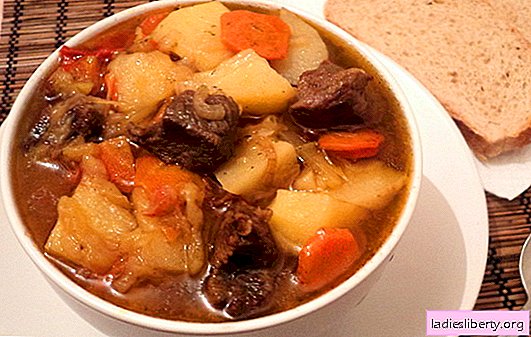
The musculoskeletal system of a person is subjected to heavy loads during any movement. Often there are injuries, inflammation of the joints, which are accompanied by pain or restriction of movement.
The knee is most susceptible to injuries and inflammatory diseases, especially if you are overweight.
Sometimes you can suddenly feel pain in the knee when walking, it would seem, for no apparent reason. This can happen to anyone at any age. Both older people and athletes equally often see a doctor with this problem.
Knee hurts when walking - causes
The knee joint is subject to the greatest stress. Even with flexion and extension, it is loaded as much as possible. Therefore, most often pain occurs precisely in this joint, which causes a lot of discomfort.
All causes of pain can be divided into 3 groups:
• inflammation of the knee joint - infectious and non-infectious;
• dystrophic processes in which there is a violation of cell metabolism with structural changes in bone tissue;
• acute or chronic joint damage due to trauma.
If the knee hurts when walking, the reasons may also be related:
with the structure of the skeleton: lordosis, scoliosis or kyphosis lead to changes in posture, gait and pain (favorite location is below the knee);
• with the congenital structure of muscles and ligaments: myomalacia and multiple sclerosis;
• with intoxication with poisons and heavy metals;
• with obesity - excess weight exerts additional pressure on the limbs, which leads to wear of the cartilage and articular structure, arthritis or deforming arthrosis develops;
• with inflammatory, infectious and trophic diseases of the digestive tract and respiratory organs;
• with poor innervation and trophic disorders developing in diabetes mellitus, in the presence of thyrotoxicosis, autoimmune processes, neuritis and endarteritis, neoplasms.
Causes of inflammatory pain
If the knee hurts when walking, causes of an inflammatory nature in the knee lead to the following changes:
1. Arthritis (gonarthritis) - the most common pathology of the knee joint, accompanied by pain when walking. Most often, people under 40 get sick, but there are exceptions. Arthritis affecting the knee include:
• rheumatoid, when the disease progresses and not only small joints, but also knee joints are involved in the inflammation, the resulting antigen – antibody complexes become the cause;
• gouty - the cause is uric acid crystals that precipitate in the joints with gout.
2. Bursitis - inflammation not of the joint itself, but of the periarticular capsule.
3. Tendonitis - inflammation of the ligaments: in addition to the arising pain in the knee when walking, this pathology leads to ankylosis of the joint or complete immobilization of the leg;
4. Tendopathy (periarthritis) - inflammation of the tendons of the periarticular muscles.
3. Baker's cyst - formed under the knee in the membranes of the tendons of the calf muscles. The larger the volume of the cyst, the greater the pain when walking.
4. Hoff disease is an inflammatory process in the fatty tissues of the pterygoid folds of the knee.
5. Iliac - tibial tract syndrome - inflammation of the tibial tract. This is a thick and sturdy fascia extending along the outer surface of the thigh. Above, it is attached to the crest of the ilium of the pelvis, below - to the tibia and knee pad (outer part). Her inflammation is a very common cause of knee pain, which, unfortunately, is often forgotten even by doctors. Pain occurs on the external (external) surface of the knee joint at the site of attachment of the tibial tract to the tibia.
6. Infections associated with infections (tuberculosis, flu, syphilis, gonorrhea, brucellosis).
7. Non-infectious inflammation (osteoporosis - a violation of the calcium balance in the bones, varicose veins, psoriasis, gout).
Exchange reasons
Under the influence of various factors, changes in the joints of a dystrophic nature develop, which also become causes of pain when walking. These include:
1. Arthrosis is a metabolic disorder in cartilage cells, ligaments, menisci. With arthrosis, over time, the cartilage becomes thinner, which covers the heads of bones and acts as a shock absorber, in these places osteophytes develop, which lead to limited functions and pain. The most common diagnosis for dystrophic lesions of the joints.
2. Meniscopy - the formation of cysts, deformations, sprains, accumulation of salts in menisci.
3. Chondromatosis - areas of benign synovial fluid compaction in connection with the degeneration of parts of the synovial sac membrane into cartilage cells.
4. Intra-articular bodies - fragments of cartilage or bone tissue floating in the synovial fluid and creating a threat of their infringement in the joint during movement.
5. Dislocation of the patella - associated with depletion of the ligaments (instability of the patella).
6. Ostgut-Schlatter disease - as a result of physical exertion and knee injuries in adolescence, osteopathy develops, deformation of the junction of the tibial tendon under the patella. Changes are accompanied by a violation of the trophic joint due to reduced blood supply and the development of neuritis;
7. Koenig's disease - areas of necrosis and detachment of cartilage from the bone. It is detected in men aged 15 to 30 years.
Injuries
Injuries occur most often in athletes (bruises, dislocations, fractures, torn menisci and ligaments). With any type of injury, edema or hematoma appears, which leads to impaired function and the occurrence of pain. The complete disappearance of pain occurs after the termination of the impact of physical exertion on the knee, maintaining peace and stop lifting weights.
Knee joints with a progressing pathology can be deformed, have smooth contours, with palpation, tissue tension is determined, with inflammatory diseases, the joints swell and redden.
First aid for pain
When a knee hurts when walking, treatment of a diseased joint requires medical supervision. If it is impossible to receive medical assistance as soon as possible, the following measures should be taken:
• reduce the load on the sore leg - lie down for a while;
• to remove the edema, you can apply ice to a sore spot;
• with a slight injury, it is possible to use an elastic bandage, but no more than for two days, while you can not pull the leg;
• to improve blood circulation in the joint, you can do a light massage without causing additional pain.
Knee hurts while walking - treatment
When a knee hurts when walking, the treatment should be comprehensive, prescribed only by a doctor after finding out the causes of the pathology. Treatment goals:
1. Eliminate the cause of the pathology.
2. Stop the pain.
3. Timely treatment of the pathology that caused the pain symptom. In severe cases, there is often a need for surgery.
4. Restoring joint mobility. For this purpose, physiotherapeutic treatment, physiotherapy exercises are used.
To reduce pain, use drug therapy:
• painkillers - creams and gels based on ketotifen (Fastum - gel);
• non-steroidal anti-inflammatory drugs (NSAIDs) - Dip - Rilif, Voltaren, Diclofenac - gel, Dolgit - cream are applied topically; it is possible to use NSAIDs parenterally or in the form of tablets, capsules, suppositories (Nurofen, Tenoxicam, Dalaren Naproxen, etc.);
• muscle relaxants (Midokalm, Baclofen, Serdolud);
• chondroprotectors (Chondroxide, Chondrolon, Structum, Teraflex, Arthra, etc.) - can stop the destruction of cartilage and even to some extent restore the damaged structure of the cartilage. The composition of the preparations includes chondroitin and glucosamine, which, getting into the damaged cartilage, are built into its structure and restore it.
• general strengthening agents.
Knee hurts when walking - prevention
Very often, when a knee hurts when walking, simple but timely measures can become a prophylaxis in the initial stages. To do this, you must:
1. Control your weight.
2. Refuse bad habits (smoking and alcohol) that exacerbate joint problems.
3. Wear comfortable shoes, use orthopedic insoles.
4. Follow a diet: eliminate fatty foods and pastries, add more vegetables, fruits, fish.
5. Do not overstrain during physical exertion, while playing sports protect your knees from injuries.
6. Promptly see a doctor without waiting for intense pain.
7. Do not self-medicate, because pathology can be complicated, and then more time, effort and resources will be required for treatment.
8. Timely treat chronic diseases without waiting for complications in the form of pain in the knee joints.
If you follow these tips, you can avoid the occurrence of pain in the knee or quickly eliminate them, while maintaining the quality of life and your health.











